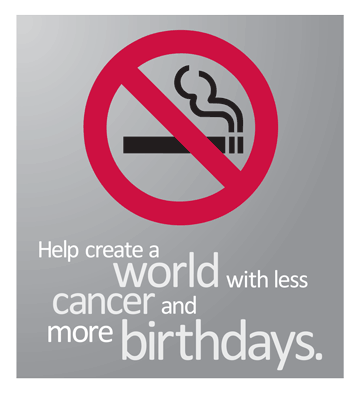
Smoking Found in Meaningful Use Objectives
Everyday the Gallup and Healthways polls 1000 Americans and asks if they smoke. The polling results become part of the Gallup-Heathways Well-Being Index which they started in 2008. In the first half of 2011, 177,600 people were interviewed and results show smoking rates by states. Nationwide, the Well-Being Index finds that an average of 21% of Americans smoke, a number unchanged since the index began. Kentucky weighs in with the highest rate of 29% while Utah can be proud of the lowest with only 11% smokers.
For the last 36 years the American Cancer Society hosts the “Great American Smokeout” urging people to quit smoking. Even though the average percent of smokers has remained the same in the past few years, it seems that regionally that is not true. This year so far is finding 18 states with smoking rates below the national average of 21% compared to only 8 last year. Mostly unchanged are 11 states with rates over 25%.
The American Cancer Society claims that, “tobacco use remains the single largest preventable cause of disease and premature death in the US, yet more than 45 million Americans still smoke cigarettes. However, more than half of these smokers have attempted to quit for at least one day in the past year. As of 2010, there were also 13.2 million cigar smokers in the US, and 2.2 million who smoke tobacco in pipes.” From reports and studies by CDC, FTC, and the WHO:
- Cigarette smoking costs more than $193 billion (i.e., $97 billion in lost productivity plus $96 billion in health care expenditures).
- Secondhand smoke costs more than $10 billion (i.e., health care expenditures, morbidity, and mortality).
- The cigarette industry spent $12.5 billion in 2006 on advertising and promotions.
- Worldwide, tobacco use causes more than 5 million deaths per year, and current trends show that tobacco use will cause more than 8 million deaths annually by 2030.
- In the United States, tobacco use is responsible for about one in five deaths annually (i.e., about 443,000 deaths per year, and an estimated 49,000 of these tobacco-related deaths are the result of secondhand smoke exposure).
- On average, smokers die 13 to 14 years earlier than nonsmokers.
With all these statistics, it is no surprise that smoking is found in the meaningful use objectives. The 25 stage 1 meaningful use objectives are categorized into 5 priority outcomes:
- Improving quality, safety, efficiency and reducing health disparities.
- Engage patients and families in their healthcare
- Ensure adequate privacy and security protections for personal health information.
- Improve care coordination.
- Improving population and public health.
Recording smoking status falls in Improving quality, safety, efficiency and reducing health disparities. Eligible Professionals must record smoking status on more than 50% of all unique patients 13 years old or older.The structured data should include if the patient currently smokes every day, some days, is a former smoker, never smoked, current status unknown, or if the it is unknown if the patient ever smoked. The exclusion for this objective is any EP who sees no patients 13 years or older.
Also in this priority outcome is the objective to report clinical quality measures. EPs must report on 6 clinical quality measures, 3 core and 3 additional. Two relate to smoking and these use the population of adults 18 and older as opposed to 13 year olds reported in status objective. One of the core measures is NQF 0028, Preventive Care and Screening Measure Pair – (a) Tobacco Use Assessment and (b) Tobacco Cessation Intervention. One of the additional measures is NQF 0027, Smoking and Tobacco Use Cessation, Medical Assistance: a) Advising Smokers and Tobacco users to Quit, b) Discussing Smoking and Tobacco Use Cessation Medications, c) Discussing Smoking and Tobacco Use Cessation Strategies.
More smoking information and statistics:
World Health Organization, Assessment of the Economic Costs of Smoking
CDC Smoking and Tobacco Use
